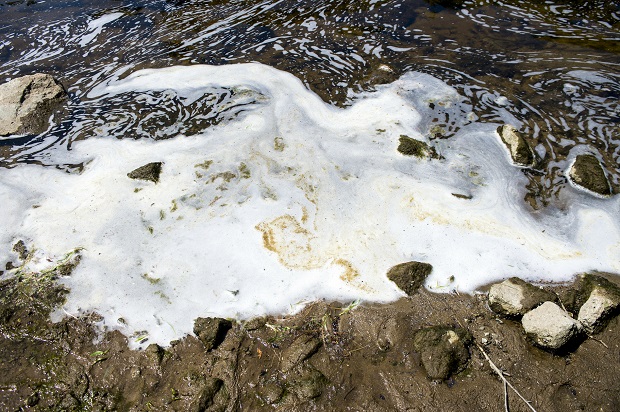The coming wave of PFAS litigation?
By: WISCONSIN LAW JOURNAL STAFF//July 13, 2023//
Published July 13, 2023 at 10:26 a.m. CDT.

The Landmark Trial That Wasn’t
By Attorneys Patrick Hodan and Guy Temple,
Reinhart Shareholders
It was billed as “The landmark trial that could determine who pays to rid America’s drinking water of PFAS.”[1] The authors arranged to travel to Charleston, S.C., for a front-row seat to an epic trial between the City of Stuart, a small community on the east coast of Florida, and chemical manufacturer 3M. Stuart sought to recover more than $100 million from 3M, alleging the company had contaminated Stuart’s drinking water with a class of chemicals called per- and polyfluoroalkyl substances, or PFAS, linked to cancer and other serious health issues.[2]
The Stuart case was unique, in part, because it was selected as the “bellwether” or “test case” for a Multidistrict Litigation (MDL) in federal court housing more than 4,000 other PFAS lawsuits. Stuart’s case, scheduled for trial on June 5, 2023, was to be a litmus test for the other lawsuits in the MDL. Except it never took place. On the eve of trial, 3M settled for $10.3 billion.[3]
The Stuart case may be a precursor to a wave of PFAS litigation in the United States in the coming years, and 3M’s headline-grabbing $10.3 billion settlement is a mere fraction of what chemical manufacturers and other users of PFAS may pay in settlement for future contamination cases.
How We Got Here
PFAS is the name given to a class of roughly 12,000 man-made chemicals which generally share a common chemical structure, namely at least one fluorine-carbon bond. The chemicals were first broadly developed and manufactured in the 1940s, including by DuPont, as Teflon for nonstick cookware. 3M eventually became the nation’s largest manufacturer of PFAS, producing a wide array of PFAS products, including ScotchGuard and aqueous film-forming foam (AFFF) used by the military and fire departments to extinguish fires.
Over time, PFAS was added to millions of everyday products: shampoo, dental floss, cosmetics, clothes, carpeting, sofas, pizza boxes, food wrappers, cookware and rain gear. PFAS use proliferated because of their heat-resistant, non-stick and grease and water-repellant qualities. However, those same qualities also make PFAS dangerous to the environment and humans. PFAS are known as “forever chemicals” because they do not break down easily and remain in the environment “forever.”
Because of their widespread use, PFAS have been found nearly everywhere across the planet: in soil, drinking water, lakes, oceans, the air, rainwater, food, fish, animals, umbilical cords and breast milk. It is believed that 98 percent of humans have PFAS in their blood.[4]
Until the 1990s, the public was generally unaware of the harmful effects of PFAS. Since then, studies have linked the chemicals to various health concerns, including decreased fertility, high blood pressure, high cholesterol, increased risk of certain cancers, developmental delays in children and compromised immune systems.[5]
Federal Action and Local Lawsuits
Prompted by health concerns, the federal government has taken actions in recent years to address PFAS contamination and exposure. In 2021, the U.S. Environmental Protection Agency (EPA) laid out its “PFAS Strategic Roadmap” to reduce the risk of harm from PFAS. As part of that plan, the EPA announced on March 14, 2023, that it would propose new drinking water limits for six types of PFAS, including perfluorooctanoic acid (PFOA) and perfluorooctane sulfonate (PFOS).[6] The EPA’s proposed Maximum Contaminant Level (MCL) for drinking water is four parts per trillion for PFOA and PFOS, currently the lowest level those substances can be accurately detected in water.[7] Once these new limits become effective later in 2023, water providers and utilities will have three years, or until 2026, to comply.
Thousands of cities and towns across the United States will likely struggle with the cost of complying with these new limits. The federal government has set aside $10 billion to help states address PFAS contamination, with some of that money intended for small and disadvantaged communities.[8] But experts believe that $10 billion is not enough, with some saying the cost of remediating drinking water alone will be in the $80 billion range.[9] Wastewater remediation could cost even more. The State of Minnesota estimates it will cost between $14 billion and $28 billion to remove PFAS from Minnesota wastewater.[10]
In some instances, cities and towns may attempt to pass along the costs of remediating their drinking water to utility customers. But not all will have that option, particularly small communities like the City of Stuart. A city of roughly 18,000 people, Stuart had insufficient resources to fund the remediation of its drinking water, so it sued 3M and others seeking to recover more than $100 million in damages for the cost of water filtration and soil remediation.
In its lawsuit, Stuart alleged that 3M and other defendants manufactured and distributed AFFF and other fluorosurfactant additives for use in AFFF that contaminated Stuart’s water supply, despite knowing for decades that AFFF was toxic.[11] Stuart alleged the AFFF had been used by its fire department at a location near the city’s drinking water and leached into it.[12] Seeking punitive damages, Stuart also alleged that 3M failed to warn the city that AFFF was harmful.[13]
Other cities, including several in Wisconsin, have followed the same path as Stuart, filing lawsuits against 3M and other chemical companies to recover the future costs of remediating their PFAS-contaminated drinking water. The lawsuits have generally alleged that 3M and other chemical companies manufactured or distributed AFFF and other PFAS additives for use in AFFF that have contaminated drinking water. Many of those lawsuits, including Stuart’s, were consolidated in the South Carolina MDL.
Those 4,000 cases may be just the tip of the iceberg. As more communities begin testing their drinking water and discover PFAS, they may have no choice but to sue manufacturers and users of PFAS. Then there are property owners who will discover PFAS on their land. They, too, may sue. Future PFAS litigation may mirror the PCB litigation that took place in Wisconsin over the past 20 years: complex, costly litigation with novel theories regarding how the contamination occurred and who was responsible for it, ensnaring a myriad of parties and ultimately resulting in large payments by those held responsible.
Recent actions by the EPA could make predictions of an explosion in PFAS litigation a reality. In September 2022, the agency proposed listing PFOA and PFOS as Hazardous Substances under the Comprehensive Environmental Response, Compensation, and Liability Act of 1980 (CERCLA).[14] Those listings are expected to be complete in 2023. On April 12, 2023, the EPA issued an advanced notice of rulemaking to designate seven additional PFAS compounds as Hazardous Substances under CERCLA.[15] In addition, the EPA suggested listing precursors to PFOA, PFOS and the seven listed PFAS compounds, along with “Categories of PFAS.”[16] If those listings become effective, hundreds, perhaps thousands of PFAS, would be listed as Hazardous Substances, and the costs to businesses involved in any potential remediation under CERCLA could grow dramatically.
Under CERCLA, the EPA can force parties that have released hazardous chemicals on land or in water to pay for remediation costs, including not only cleanup, but also damages to natural resources. Further, CERCLA imposes strict liability on current and past owners of a property, those that generated or disposed of hazardous substances, and those that transported hazardous waste. The widespread use of PFAS over the past 70 years means that many businesses could be affected by future CERCLA actions, even those without knowledge that they were manufacturing, using or transporting PFAS, or that it was present on their property.
Businesses or manufacturers that used PFAS in their operations are especially at risk. Paper companies, electroplating businesses and chemical manufacturers will likely be targets for such litigation, especially those located near the contamination.
Experts and Expense
Successful prosecution of PFAS drinking water and soil contamination lawsuits will not be an easy matter. Plaintiffs will need to prove what specific PFAS is contaminating the water or property, where it came from, how it got there and whose it is. These cases will be highly technical, complex and costly, requiring expert testimony. Defendants will retain their own experts, leading to a “battle of the experts” at trial. And, unlike 3M, who faced potential punitive damages for failing to warn about the dangers of PFAS, defendants may choose not to settle.
While the Stuart case settled before trial, it nonetheless provides a glimpse into the expertise that will be needed at PFAS trials. According to court documents, Stuart identified no less than 15 experts to testify at trial.[17] One expert, Anthony Brown, a leading California hydrologist, was tasked with identifying the PFAS contaminating Stuart’s drinking water and where the primary and secondary sources of the contamination were located. Brown identified AFFF as the primary and secondary sources of PFAS detected in the city’s wells, noting that “the only primary sources of PFAS contamination proximate to, and/or up-gradient of, the City’s Wells” are four city properties where firefighters used AFFF for training purposes.[18] Brown found “[n]o other sources of PFAS capable of contributing to the PFAS detected in samples from the City Wells . . . .”[19]
3M hotly contested Brown’s opinions and moved to exclude them before trial, arguing that Brown failed to consider alternate sources of PFAS, such as the city landfill, wastewater effluent and a local dry cleaner, while determining his primary sources of contamination.[20] The MDL judge rejected 3M’s challenges, finding that they were better addressed through cross-examination.
Stuart also retained leading PFAS expert Dr. Jonathan W. Martin, Ph.D. from Stockholm University’s Department of Environmental Science and Analytical Chemistry, to “allocate” the PFAS found in Stuart’s drinking water to 3M. According to court records, Dr. Martin analyzed samples from the drinking water using a modified “branched/linear/total” or B/L/T method.[21] According to Dr. Martin, PFOA generated by electrochemical fluorination, a process used by 3M, creates both branched and linear PFOA, as opposed to PFOA generated by telomerization, which contains only linear isomers.[22] Thus, by measuring the percentage of branched isomers in the water, Dr. Martin was able to attribute the PFOA detected in Stuart’s water to 3M.[23]
3M also moved to exclude Dr. Martin’s testimony, arguing that (1) his B/L/T method was unreliable because it was never submitted for independent review and defendants were unable to replicate or validate his methodology; (2) that he failed to account for isomer fractionation (a process whereby linear isomers travel slower than branched isomers through the environment) which “can cause the relative percentage of branch isomers to increase the farther PFOA travels from the source area”; and (3) that his analysis is prone to systemic analytical bias.[24] The MDL judge also rejected these arguments.
There is no telling how the “battle of the experts” would have played out in the Stuart case, but it appears that 3M was not taking any chances.
Still looming in the South Carolina MDL are hundreds of personal injury cases where plaintiffs allege that their cancers and other health ailments were caused by exposure to AFFF. Some of those personal injury claims have been brought by firefighters who were directly exposed to AFFF during training or firefighting activities. A personal injury case will soon be selected as the next “bellwether” cases to be tried in the MDL. This case potentially poses an even greater risk to 3M, chemical companies and other users of PFAS.
The Path Ahead for Industry
To date, while studies have shown that there are “links” between PFAS and certain human ailments, there still are disagreements in the scientific community about the level and duration of exposure necessary to cause harm. If the next bellwether case proceeds to trial, we may soon learn whether a jury believes PFAS causes these ailments. And if the jury finds against 3M, future PFAS litigation will not resemble past PCB litigation. Instead, it will mirror past asbestos litigation, potentially wiping out some companies. No date has been set for the next bellwether case to proceed to trial, but the authors are hoping to get a second chance to witness, firsthand, history in the making.
[1] Zoya Teirstein, The landmark trial that could determine who pays to rid America’s drinking water of PFAS, Grist (June 2, 2023), https://grist.org/accountability/3m-pfas-drinking-water-forever-chemicals-lawsuit/.
[2] City of Stuart v. 3M Co., MDL No. 2:18-mn-2873-RMG, No. 2:18-cv-3487-RMG (D.S.C. filed Dec. 20, 2018) (originally filed in S.D. Fla. No. 2:18-cv-14430).
[3] Clark Mindock, 3M Reaches Tentative $10.3 Billion Deal Over US ‘Forever Chemicals’ Claims, Reuters News (June 22, 2023, 4:40 PM CDT), https://www.reuters.com/legal/3m-reaches-tentative-103-billion-deal-over-us-forever-chemicals-claims-2023-06-22/.
[4] Ryan C. Lewis, Lauren E. Johns & John D. Meeker, Serum Biomarkers of Exposure to Perfluoroalkyl Substances in Relation to Serum Testosterone and Measures of Thyroid Function among Adults and Adolescents from NHANES 2011-2012, Int’l J. Env’t Rsch. Pub. Health, 12(6): 6098-6114 (2015), https://www.ncbi.nlm.nih.gov/pmc/articles/PMC4483690/pdf/ijerph-12-06098.pdf.
[5] U.S. Env’t Protection Agency, Proposed PFAS National Primary Drinking Water Regulation Frequently Asked Questions and Answers (Mar. 14, 2023), https://www.epa.gov/system/files/documents/2023-04/Public%20FAQs_PFAS_NPDWR_Final_4.4.23.pdf.
[6] PFAS National Primary Drinking Water Regulation Rulemaking, 88 Fed. Reg. 18638 (proposed Mar. 29, 2023) (to be codified at 40 C.F.R. pts. 141 & 142).
[7] Id.
[8] Infrastructure Investment and Jobs Act, Pub. L. No. 117-58, 135 Stat. 429 (2021) (also known as the “Bipartisan Infrastructure Law”).
[9] Press Release, Am. Water Works Ass’n, AWWA statement on proposed PFAS drinking water standards (Mar. 14, 2023), https://www.awwa.org/AWWA-Articles/awwa-statement-on-proposed-pfas-drinking-water-standards.
[10] Press Release, Minn. Pollution Control Agency, Groundbreaking study shows unaffordable costs of PFAS cleanup from wastewater (June 6, 2023), https://www.pca.state.mn.us/news-and-stories/groundbreaking-study-shows-unaffordable-costs-of-pfas-cleanup-from-wastewater.
[11] Compl., City of Stuart. v. 3M Co., No. 2:18-cv-14430 (S.D. Fla. Oct. 18, 2018), ECF No. 1 (transferred to South Carolina District Court, No. 2:18-cv-3487-RMG on Dec. 20, 2018).
[12] Id. at 9.
[13] Id. at 11-14.
[14] Designation of Perfluorooctanoic Acid (PFOA) and Perfluorooctanesulfonic Acid (PFOS) as CERCLA Hazardous Substances, 87 Fed. Reg. 54415 (proposed Sept. 6, 2022) (to be codified in 40 C.F.R. pt. 302).
[15] Addressing PFAS in the Environment, 88 Fed. Reg. 22399 (advance notice of proposed rulemaking Apr. 13, 2023).
[16] Id.
[17] Pl’s. Am. Witness List, City of Stuart. v. 3M Co., No. 2:18-cv-3487-RMG (D. S.C. May 26, 2023), ECF No. 357.
[18] Order at 7, City of Stuart v. 3M Co., No. 2:18-cv-3487-RMG (D. S.C. May 2, 2023), ECF No. 278 (denying Defs’ Mot. to Exclude Pl’s. Expert Testimony) (also available at In re Aqueous Film-Forming Foams Prod. Liab. Litig., No. 2:18-cv-3487-RMG, 2023 WL 3517923 (D.S.C. May 2, 2023)).
[19] Id.
[20] Id. at 9.
[21] Id. at 10.
[22] Id. at 11.
[23] Id.
[24] Id. at 11-14.


About Patrick Hodan
Patrick Hodan is a shareholder in Reinhart’s Litigation Practice and co-chair of the firm’s PFAS Practice. He has decades of uniquely focused experience and a pragmatic approach to navigating the complexities of commercial and product liability litigation. He regularly counsels clients concerning contaminants, including Per-and Polyfluoroalkyl substances, or PFAS (including PFOA and PFOS). Much of his practice centers on helping major manufacturers in the United States and Canada with fire-related claims, and he serves as national counsel for North America’s largest manufacturer of residential ventilation products.
About Guy Temple
Guy Temple is a shareholder in Reinhart’s Litigation Practice and co-chair of the firm’s PFAS Practice. He counsels product manufacturers, developers, dealers and distributors in avoiding, defending and prosecuting complex commercial disputes involving supply chain contracts, product labeling and safety, advertising and warranties. He also assists product manufacturers and distributors in navigating the rapidly changing state and federal regulatory landscape and litigation environment of PFAS “forever chemical” content in manufactured and imported products.
Legal News
- Wisconsin attorney loses law license, ordered to pay $16K fine
- Former Wisconsin police officer charged with 5 bestiality felony counts
- Judge reject’s Trump’s bid for a new trial in $83.3 million E. Jean Carroll defamation case
- Dozens of deaths reveal risks of injecting sedatives into people restrained by police
- The Latest: Supreme Court arguments conclude in Trump immunity case
- Net neutrality restored as FCC votes to regulate internet providers
- Wisconsin Attorney General asks Congress to expand reproductive health services
- Attorney General Kaul releases update at three-year anniversary of clergy and faith leader abuse initiative
- State Bar leaders remain deeply divided over special purpose trust
- Former Wisconsin college chancellor fired over porn career is fighting to keep his faculty post
- Pecker says he pledged to be Trump campaign’s ‘eyes and ears’ during 2016 race
- A conservative quest to limit diversity programs gains momentum in states
WLJ People
- Power 30 Personal Injury Attorneys – Russell Nicolet
- Power 30 Personal Injury Attorneys – Benjamin Nicolet
- Power 30 Personal Injury Attorneys – Dustin T. Woehl
- Power 30 Personal Injury Attorneys – Katherine Metzger
- Power 30 Personal Injury Attorneys – Joseph Ryan
- Power 30 Personal Injury Attorneys – James M. Ryan
- Power 30 Personal Injury Attorneys – Dana Wachs
- Power 30 Personal Injury Attorneys – Mark L. Thomsen
- Power 30 Personal Injury Attorneys – Matthew Lein
- Power 30 Personal Injury Attorneys – Jeffrey A. Pitman
- Power 30 Personal Injury Attorneys – William Pemberton
- Power 30 Personal Injury Attorneys – Howard S. Sicula












